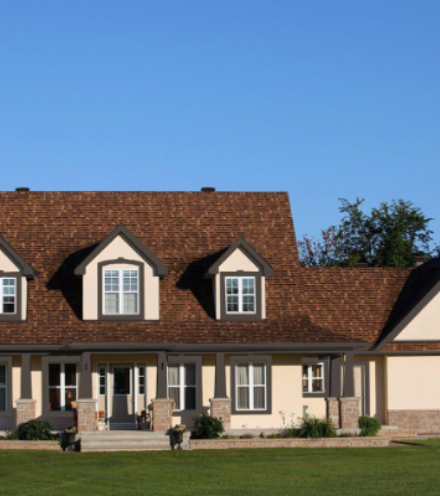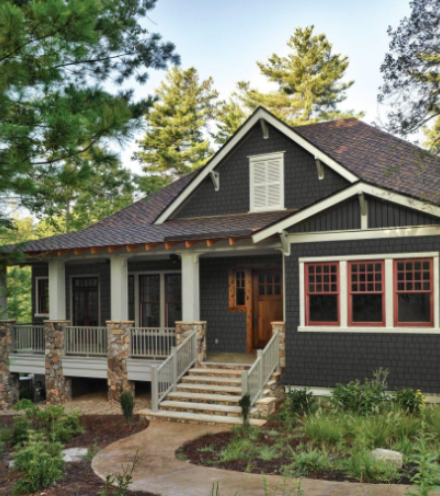Hurricanes have proved to be one of the most dangerous natural disasters throughout history. Not only are they responsible for a number of fatalities, but even the more mild storms can cause severe damage and destruction to any homes in its path.
Houses in hurricane territory should have been constructed with strong, durable materials designed to withstand high winds and rain. That being said, even a fortress of a home can still be damaged in a storm's wake. Aside from the roof, the siding of the house is likely to take the brunt of the damage.
If you've safely gotten through a hurricane and found that your home's exterior has been damaged, here is what you should consider when repairing the siding.
Take Immediate Action
As soon as you are able to do so you must take action to have the damaged siding repaired. Even if the house itself is still structurally sound and only siding has been removed, this still exposes your home to damage. Think of the siding as the exoskeleton of the house - it is what is solely responsible for protecting the inside from the outside elements.
Hurricanes often bring serious flooding, but even if you were lucky enough to be spared of a floor house there is often rain. With siding stripped away it is easy for water to get trapped and begin to cause possibly irreparable harm to the house. Therefore it is imperative to do a temporary fix until a contractor can get out. Since local contractors will obviously be swamped with work it is better to at least have a temporary fix than simply leave your house exposed.
You should remove any siding that is currently hanging off the house, as the weight can cause even more damage or stress to the house. If not much damage has occurred to the siding you may be able to do a patch job with your own purchased siding, but otherwise it is best to use tarps or heavy plastic to cover any damage areas. This includes areas where the siding has completely blown off but also areas where there may be holes or cracks. Cover any space that has damage that could allow moisture to seep in and reach the underlying OSB or plywood.
Repairing versus Replacement
While temporarily repairing the siding, chances are you'll also be gauging the total extent of the damage.
It will likely be clear if there is so much damage or missing siding that a total replacement is needed. You should mention this to the contractor while speaking to them so they are aware. However, sometimes what even seems like mild or moderate damage may be worse than anticipated. You, with the recommendation of your contractor, will need to figure out if your home can do with a repair or if it will all need to be replaced.
If there is a significant amount of damage you should simply replace all the siding. If a large amount of water damage has occurred, chances are high that the contractor will need to remove the entire siding to do any moisture control repairs which also leads to a replacement. It is also worth it to do a complete replacement if your home's current siding was already old and dated. A complete re-siding job will increase the value of your home. While this might not be an investment you'd normally do, if the siding is already reaching the end of its lifespan and has some damage you should consider replacement.
Upgrading to a Superior Material
If you or your contractor has determined that it's in your best interest to do a complete siding replacement, don't be too discouraged. A complete replacement offers you the opportunity to upgrade your home to a superior material choice, which means your home will be more resilient and also see an increase in value.
One of the best siding material choices currently on the market is fiber cement. Fiber cement siding is widely believed to be one of, if not the, best siding for homes in regions where hurricanes are common. The reason for this is the incredible durability of fiber cement. This siding is a type of composite siding made up of a mix of cement, sand and cellulose fibers.
Fiber cement is extremely water-resistant and in most practical terms fireproof. Fire-resistance may seem an odd factor, but consider that fires occur quite commonly due to downed power lines and can cause serious destruction, which was witness firsthand during in 2012 when Hurricane Sandy hit.
There are other siding materials that can and do work, but there really aren't any that are on the same level in terms of protection and longevity as fiber cement. Fiber cement is one of the wisest investments you can make as a homeowner if you live in a region where hurricanes or similar tropical storms occur.
Hurricanes are a homeowner's worst nightmare. Not only is there a danger to human life, but even if you're safe in a shelter the storm can still destroy the home you work so hard to care for. Thankfully damaged siding can easily be fixed and may not be as expensive as anticipated, especially if serious water damage hasn't occurred. After assessing the damage and patching up any bare areas, contact a local home contractor as soon as possible and you'll soon be on your way to once again having a beautiful home.




